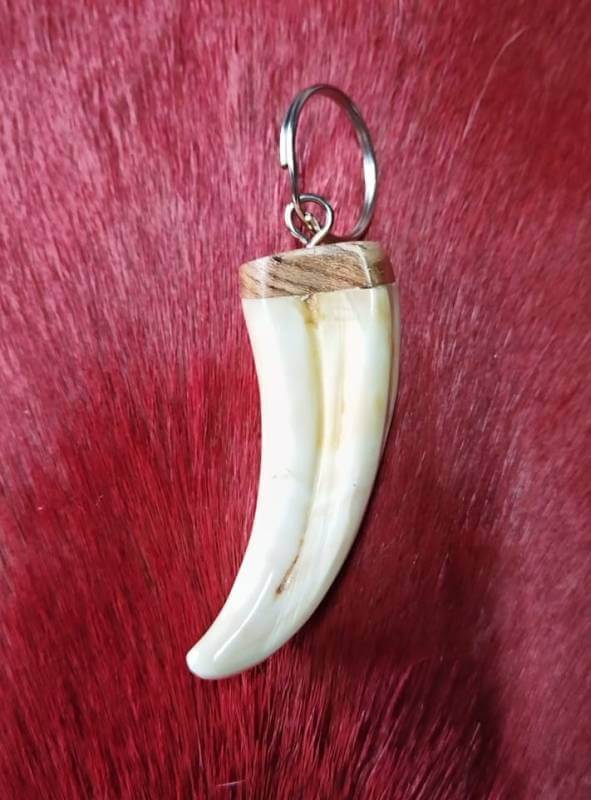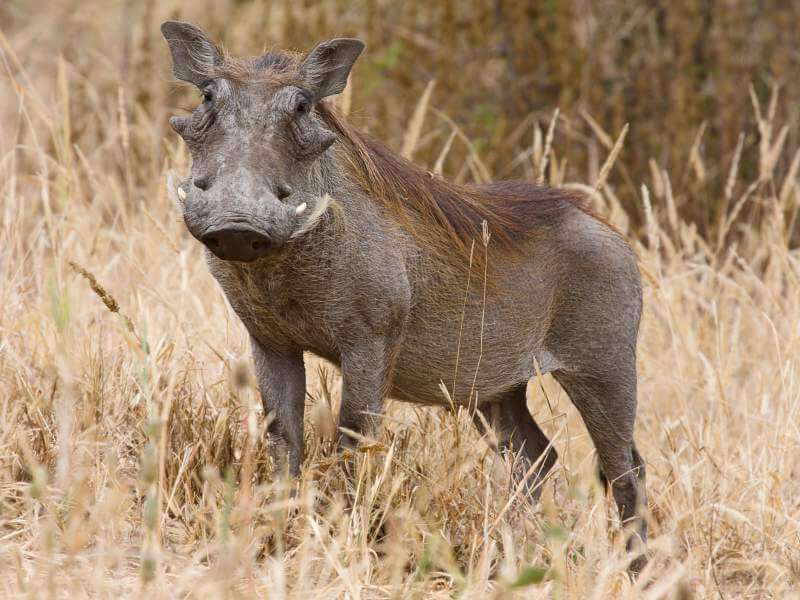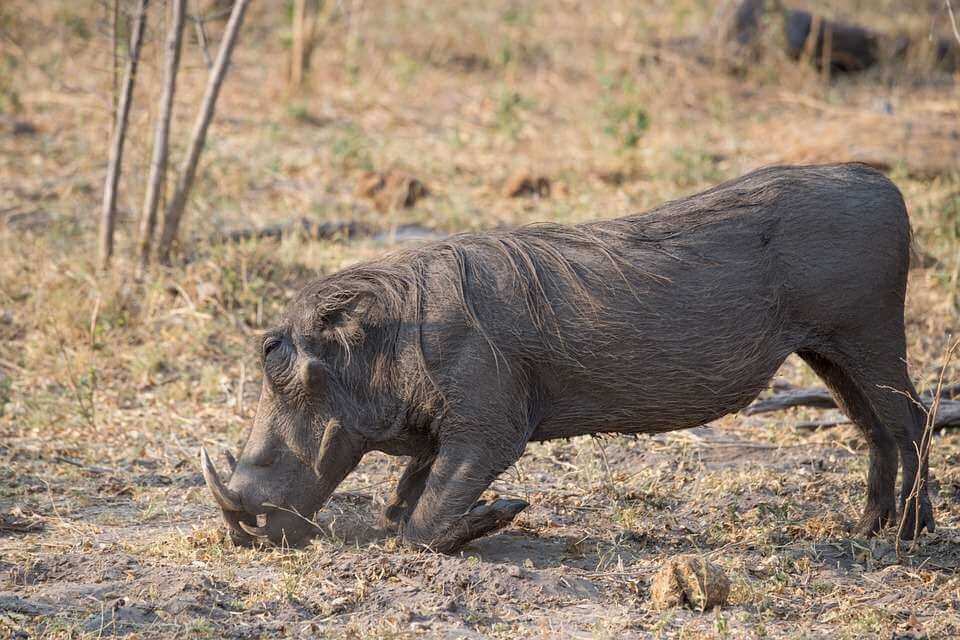African Warthog tusk keyring
.jpg)
Click on image for larger view

African Warthog Tusks Keyring
$25-00
Region: South Africa
Material: Warthog tusk
Size: 8 - 12 cm (L)
Warthog tusk keyring
Size: 8 - 12cm (L)
Genuine African warthog tusk keyring 
Beautiful handcrafted African warthog tusk keyring that has been highly polished and bleached and is about 3" in length. The warthog tusk keyring originates from Zimbabwe and has been obtain legally through the national game parks and wildlife service, no illegal gather. We can arrange to have bigger or smaller warthog tusk keyrings made for you so should you be looking for a certain size in this style of keyring email us and let us know.
All these tusks have been collected from game reserves and there has been no illegal gather of these tusks The warthog tusks are measured following the curve We have a selection of other African Warthog tusks on our website should you be looking for loose tusks are tusk made into various products,
All sizes listed are approximate. The warthog tusk you purchase and receive may differ just slightly in size, look, and/or pattern from the warthog tusk shown in the picture because of the nature African animal tusk each tusk is unique. We are registered with KZN Wildlife in KwaZulu Natal, South Africa who are our local conservation authorities in our area, we obtain any documentation needed from them for any items that is needed for your country. You can feel assured that you have bought from a legal, registered trader.
If you are looking for other African game skulls or horns return to our main African animal skulls page
Other styles available below or on our main skull horns page



Facts about this animal
The warthog is a large species of pig that are found in moist and arid savannas. They avoid rain forests, deserts, and high mountains. Neither graceful nor beautiful, warthogs are however, remarkable animals. They are the only pigs able to live in areas without water for several months of the year.
The warthog is named after the two sets of tusks that are found on the face of the warthog. Warthogs use their tusks both for fighting off unwanted predators and other competing male warthogs, and the warthogs also use these tusks for digging in the dirt for grubs and insects.
They are remarkable for their strength, intelligence, and flexibility! Unlike many of their African counterparts, they are not endangered. This is because they are so skilled at adapting to new threats. For example, most warthogs like to forage during the light of the morning and early evening. But if they live in an area where people hunt them, they switch to foraging at night.
The face is fairly flat and the snout elongated. Eyes set high on the head enables the warthog to keep a lookout for predators even when it lowers its head to feed on short grass. The warthogs large tusks are unusual: The two upper ones emerge from the sides of the snout to form a semicircle; the lower tusks at the base of the uppers are worn to a sharp cutting edge.
Warthogs are not picky about their homes, either. Instead of digging their own burrows, they find abandoned aardvark holes or natural burrows for homes. This is where they raise their young, sleep, and hide from predators. They usually back into the burrow, so they can use their sharp tusks to scare off any animal that bothers them. Burrows also protect them from temperature extremes. It may be hot at high noon or freezing in the middle of the night above ground, but the warthog remains comfy it its burrow.
Factsheet
Scientific classification
- Swahili Name: Ngiri
- Scientific Name: Phacochoerus aethiopicus
- Size: 75cm at shoulder
- Weight: 55 - 110 kgs
- Lifespan: 12 -15 years
- Habitat: Savanna and open grasslands
- Diet: Grazer
- Gestation: 6 months
- Predators: Lions, leopards, cheetahs, hyenas, hunting dogs
Conservation status: Least concern / abundant









